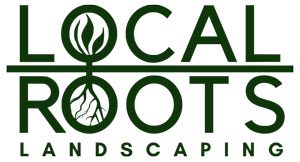Paving the Path to a Greener Pittsburgh with Sustainable Hardscaping
In a city known for its rich history and innovative spirit, Pittsburgh residents are increasingly embracing sustainable living practices. From reducing waste to conserving energy, the Steel City is making strides toward a greener future. When it comes to landscaping, particularly hardscaping, making eco-friendly choices is not only in line with Pittsburgh’s sustainability goals but also enhances the beauty and functionality of outdoor spaces. Let’s explore how sustainable hardscaping can transform your landscape while preserving the environment.
Eco-Conscious Material Selection: Building Responsibly
- Permeable Pavers: Opt for permeable pavers in pathways, driveways, and patios. These materials allow rainwater to seep into the ground, reducing runoff and helping to replenish groundwater resources.
- Recycled Materials: Choose hardscaping materials made from recycled content, such as crushed concrete or reclaimed stone. This reduces the demand for virgin materials and diverts waste from landfills.
- Natural Stone: When selecting stone for walls, pathways, or patios, prioritize locally sourced options. This reduces transportation emissions and supports the local economy.
- Wood Alternatives: Consider using composite materials or reclaimed wood for decking and outdoor structures. These materials mimic the look of wood while being more durable and sustainable.
Water-Wise Practices: Nurturing the Landscape
- Rainwater Harvesting: Install rain barrels or cisterns to collect rainwater from your roof. This harvested water can then be used to irrigate your landscaping, reducing the demand on municipal water sources.
- Drip Irrigation: Opt for drip irrigation systems that target plant roots directly, minimizing water wastage through evaporation and runoff.
- Xeriscaping: Incorporate xeriscaping principles into your hardscape design. Utilize drought-tolerant plants and ground covers that require less water, reducing overall irrigation needs.
- Green Roofs: If applicable, consider adding green roofs to your outdoor structures. These plant-covered roofs help absorb rainwater, reduce heat absorption, and provide habitat for local wildlife.
Native Plant Integration: Flourishing with Flora
- Native Plant Beds: Integrate native plants into your hardscape design to create vibrant, low-maintenance plant beds. Native species are adapted to the local climate, requiring less water and chemical inputs.
- Pollinator Gardens: Design spaces that attract pollinators like bees and butterflies. These gardens enhance biodiversity and contribute to the health of the local ecosystem.
- Living Walls: Incorporate vertical gardens or living walls into your hardscape. These installations not only add greenery but also improve air quality and insulation.
A Green Legacy in the Steel City
Embracing sustainable hardscaping practices in Pittsburgh isn’t just a trend; it’s a commitment to creating a healthier and more resilient environment. By carefully selecting eco-friendly materials, implementing water-wise practices, and integrating native plants, you’re contributing to the city’s sustainable vision while enhancing the aesthetics and functionality of your outdoor spaces.
As Pittsburgh continues to evolve as a hub of innovation and progress, it’s up to each of us to contribute to a greener tomorrow. Through sustainable hardscaping, you’re not just beautifying your property—you’re leaving a green legacy for generations to come, transforming Pittsburgh into a city of sustainable landscapes and enduring natural beauty.

